8 Limbs of Yoga: Niyamas
This article is the first of an eight part series. It will present the first limb: niyama (inward moral observances) of the 8-fold path of Raja yoga.
The eight limbs of yoga (ashta-anga-yoga) expounded on in the 2,300-year-old Yoga Sutra compiled by Patanjali, are a progressive series of steps or disciplines, which purify the body and mind, providing us with the means to achieve direct experiential knowledge of God. They comprise a scientific system formulated such that the practice of each limb reinforces the others, ultimately bringing the practitioner to a state of yoga: union with cosmic consciousness.
The yamas and niyamas comprise the universal moral truths that are the backbone of every religion and spiritual practice. Although they are often misinterpreted as ‘shalt nots’ they cannot be effectively practiced in this way. It’s much more helpful to consider them as things that we ‘do.’ Rather than negate our behavior through censorship, it is a much more powerful practice to journey inward and address the impulses behind our actions.
Although the yamas are typically listed as the first limb of yoga, before purity can reflect in our actions it must exist in our thoughts. Therefore, the niyamas will be presented first in this article. Niyama, the second limb, has to do with purity of thought. Everything that exists has been preceded by thought. We are the co-creators of this reality.
The Niyamas: What We Think We Become
The niyamas address inner observance and self-discipline, how we treat ourselves. They lead to ‘right intention,’ which comes from the expanded perspective of doing what is best for all of consciousness, even at the expense of personal sacrifice. According to Patanjali’s Yoga Sutra, there are five niyamas:
- Shauca or purity
- Santosha or contentment
- Tapas or austerity
- Svadhyaya or self-study
- Ishvara-pranidhana or devotion to the Lord.
Shauca, purity, is important for both our inner and outer well being. Practicing good hygiene habits combined with asana and pranayama remove toxins and cleanse us inside and out. In a physical sense it means purity of body as well as purity in what we nourish the body with. This includes what we eat as well as how the food is obtained.
Perhaps even more important than the physical aspects of shauca is the purity of our thoughts, actions and deeds. Impure thoughts can be cleansed through the practice of bhakti or devotion, while faulty reasoning and perception can be purified by svadhyaya or introspective self-study. With a clear and lucid mind we are better equipped to practice the other limbs of yoga.
Santosha, contentment, is the means by which we free ourselves from the winds of desire. The practice of this niyama has become even more crucial in today’s consumer-based society where we have been conditioned since birth to believe the key to our happiness lies in some external thing. True and lasting happiness can only be attained as an internal state of being. So how do we go about ‘cultivating’ contentment?
We can set the context by practicing acceptance and gratitude. Acceptance – saying ‘yes’ to what is in this moment; gratitude – recognizing the grace we have already received. As we do, contentment and joy naturally arise.
Tapas refers to any austere practice requiring a burning, self-disciplined effort resulting in the purification of our character. Patanjali states in his Yoga Sutra that tapasya leads to perfection (siddhi) of the body and the senses. Tapas are those situations in life, contrived or naturally occurring, from which we can push off of, in order to propel ourselves higher. Whether engaging the body, speech or mind, tapasya entails a sustained and regimented endeavor to connect with the divine, while all obstacles are burned up and fall away.
Pranayama and asana are voluntary forms of tapasya. The Buddhist practice of vipassana is another example of an intentional tapasya, where the practitioner takes a ten day vow of silence and sits in meditation for eight hours a day. A disability such as a stroke can become an involuntary tapasya if the practitioner is able to adopt an attitude whereby they can use that condition to move closer to God.
However, the austerities, hardships, which help us to discern body from spirit, should not be taken to an extreme. The Bhagavad-Gita speaks out against exaggerated asceticism, which involves mortification of the flesh and ignores the fact that the Lord (Ishvara) resides within the body.
Svadyaya, self-inquiry encompasses all learning, reflection and experience, which result in a greater understanding of our own fundamental nature. It includes the study of sacred texts or any books that resonate with us in a way that moves us toward the light. Self-study is perhaps the most crucial of the niyamas because at some point we must all reconcile to the fact that although higher consciousness is within everyone’s grasp, no guru, priest or other person can do the work for us. Sri Ramana Maharshi, the great Indian saint who left his body in 1950, advocated self-inquiry as the primary proponent of sadhana (daily practice). He guided his followers toward freedom from ego-illusion by instructing them to always look to the source of the “I-thought.”
The Yoga Sutra says that as we progress on our path of self-study we develop a connection to the universal Divine laws and the spiritual masters who revealed them. Mantra is a way of strengthening our Divine connection, so svadyaya also includes kirtan and the repetition of mantra.
Ishvarapranidhana, devotion to the Lord literally means, ‘to lay all of our actions at the feet of God.’ It requires that we detach from the outcome of any endeavor, just do our best and leave the rest to a higher power. Ishvarapranidhana addresses ‘right intention.’
Is the source of our motivation behind a particular action ego-driven or is our intention selfless? Ram Dass, a spiritual pioneer who is, and has been, instrumental in introducing Eastern spirituality to the west, often speaks about dis-identifying with our ‘role’ as helper when performing acts of service. When we perform a good deed and there is nobody there as witness, did we acquire karmic merit? When a tree falls in the forest and there is nobody there to hear it, did it make a sound? The answer to both questions is a resounding ‘Yes,’ because both involve a transfer of energy, which according to Sir Isaac Newton can neither be created nor destroyed, but only transferred or transmuted.
Besides, Presence is always there as witness. In fact, when we perform acts of service with the knowledge that nobody will ever know, it is far more likely that our intention is pure.
Through the practice of yama and niyama, we become channels for the good of the universe. Connecting with the truth residing in each of our hearts, connects us with all that is.
Loka Samasta Sukhino Bhavantu ~ May all beings be happy and at peace.
*{published Jan/Feb 2006 issue of ‘LA Yoga & Ayurveda Magazine’, by Sydney and Kevin Light}


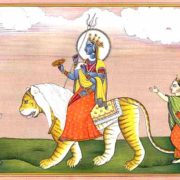



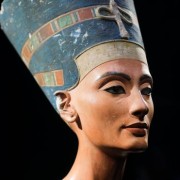
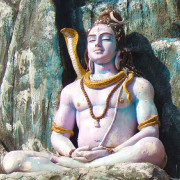
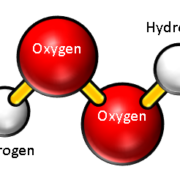
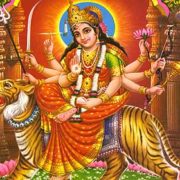

I like the helpful info you provide in your articles. I will bookmark your weblog and check again here frequently.
I’m quite sure I’ll learn a lot of new stuff right here!
Good luck for the next!
Feel free to surf to my blog – personal trainer toronto
This blog was… how do you say it? Relevant!! Finally
I have found something which helped me. Kudos!
Also visit my webpage Rehabs in Florida, http://www.resellerhosting20.com,
Highly descriptive blog, I liked that bit. Will there be a part 2?
Yes, there are two other articles: Dhāraṇā , Dhyāna, Samadhi ~ December 4, 2017
ASANA, PRANAYAMA, PRATYAHARA ~ December 4, 2017
Best Wishes~
HH
I see you share interesting stuff here, you can earn some extra
cash, your blog has huge potential, for the monetizing method,
just search in google – K2 advices how to monetize a website
wonderful put up, very informative. I’m wondering why
the other specialists of this sector do not understand this.
You should continue your writing. I am confident, you have a huge readers’ base already!